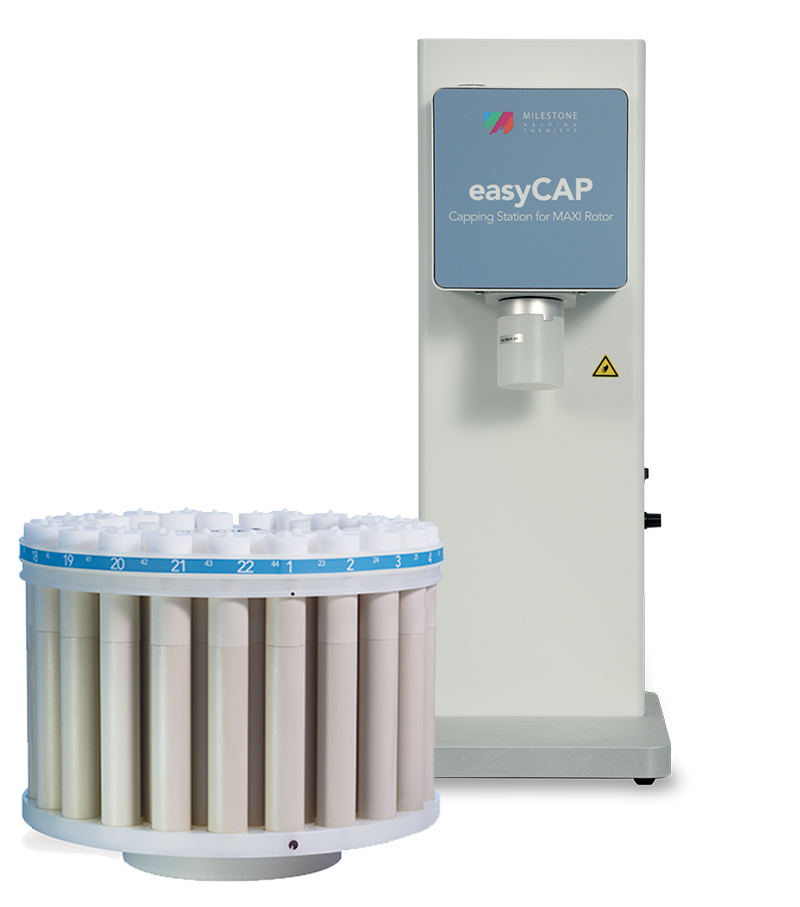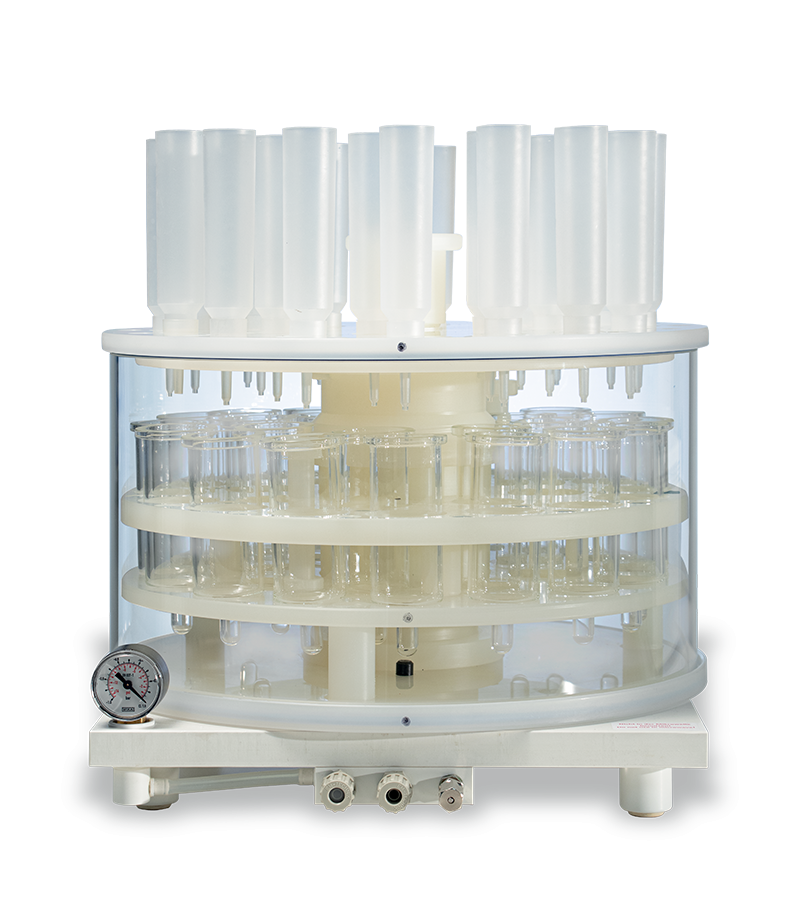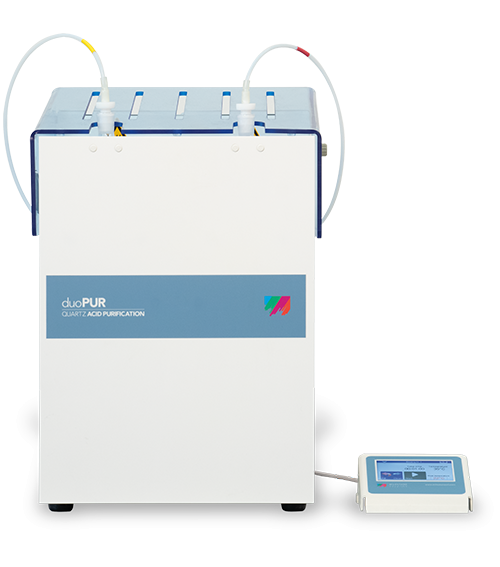As the performance of atomic spectroscopy techniques for elemental analysis has improved over the past several decades, there has been a concurrent need for improvements in sample preparation. While the sample digestion step appropriately draws the most attention in the preparation process, there are other important steps in the sample preparation workflow that also impact the outcomes of the laboratory, some of which may be unexpected in scope and scale. We present a ‘total workflow’ approach to sample preparation and propose ways to improve key aspects of elemental analysis such as lab throughput, data quality, costs, and safety.
Just as importantly, we also offers practical advice for preventing workflow disruptions, such as incomplete digestions or sample contamination, which can prevent a laboratory from meeting their overall performance, cost, and safety goals.
These decades of experience have led to the development of several tools to address most routine tasks in the overall sample preparation process. Reagents handling, cleaning approach, supply of ultrapure acids and the handling of digestion vessels are all parameters to consider. In fact, all of them have an impact on achieving superior elemental analysis through a better sample preparation workflow.
These decades of experience have led to the development of several tools to address most routine tasks in the overall sample preparation process. Reagents handling, cleaning approach, supply of ultrapure acids and the handling of digestion vessels are all parameters to consider. In fact, all of them have an impact on achieving superior elemental analysis through a better sample preparation workflow.
-
Look beyond sample digestion and consider the total sample preparation workflow for elemental analysis
-
Discover new approaches for improving your lab’s throughput, quality, flexibility, safety, and costs
-
Find ways to avoid workflow disruptions that have negative effects on your lab’s outcomes
In-house Acid Purification
High-purity acid expenses for elemental analysis labs can consume a significant portion of their operational budgets. In addition, accidental contamination and supply chain challenges for obtaining high-purity acids can put a lab’s operations at risk. Learn the principles of sub-boiling distillation and how bringing acid purification in-house can result in considerable cost savings and ensure an uninterrupted analysis workflow. Check out our Purifier DuoPUR

 Automated Reagent Dosing
Automated Reagent Dosing
The reagent addition, or “dosing,” step of the sample preparation process has traditionally been a tedious and laborious task within elemental analysis labs, especially when it involves concentrated acids. easyFILL demonstrates how automating the reagent dosing process provides greater consistency, while removing the operator from exposure to harmful acid fumes and freeing them to perform safer and more value-added tasks. Check out our EasyFILL, Automatic Dispensing System

 Vessel Handling
Vessel Handling
Handling a large number of digestion vessels impacts lab workflow and operator time. By improving this step, your lab can achieve a fast and reliable digestion process with lower operator time. The easyCAP, suitable for MAXI-44 or MAXI-24 High Performance (HP) rotors, offers greater productivity and performance for high-volume laboratories. The easyCAP, with its minimum footprint and light weight, can be easily installed under any fume hood, and be ready for use in a few seconds. Check out our easyCAP voor MAXI rotoren

Single Reaction Chamber Microwave Digestion
The introduction of Single Reaction Chamber (SRC) microwave digestion technology provided a step-change in sample prep performance and capabilities for elemental analysis. In the context of workflow, SRC’s benefits include higher overall sample throughput, faster digestions for difficult samples, and reduced labor requirements.
The third generation of benchtop SRC-based instruments has been recently released, providing further benefits to the sample prep workflow for elemental analysis. Check out our Microwave UltraWAVE
The third generation of benchtop SRC-based instruments has been recently released, providing further benefits to the sample prep workflow for elemental analysis. Check out our Microwave UltraWAVE

Rotor-based Microwave Digestion
While still considered the “workhorse” of many elemental analysis laboratories, rotor- based digestion vessels can be cumbersome to handle, and the systems can also be the weak link in a laboratory’s sample prep workflow if something goes wrong. Discover how various aspects of rotor-based digestion vessels, systems, and accessories can work to optimize a workflow, as well as avoid disruptions such as the need to rerun samples. Check out our Microwave Ethos EASY

Filtration
The Simultaneous Filtration System (SFS-24) improves the lab’s productivity and reduces the fume hood space requirement. The SFS-24 uses inexpensive funnels, that are compatible with all commonly used solvents and mineral acids. This setup is combined with a vacuum pump and pressure manometer to accelerate and control the process, leading to an easier and faster filtration process.

Automated Labware Cleaning
Using acid baths and microwave systems for cleaning sample prep vessels and other types of labware can have a substantial impact on an elemental analysis lab’s throughput, workflow, and efficiency. By automating this step using acid-steam cleaning, you can keep your microwave system focused on digesting samples and removes the tedium and hazards of hand-cleaning labware from your staff. Check out our Trace clean


